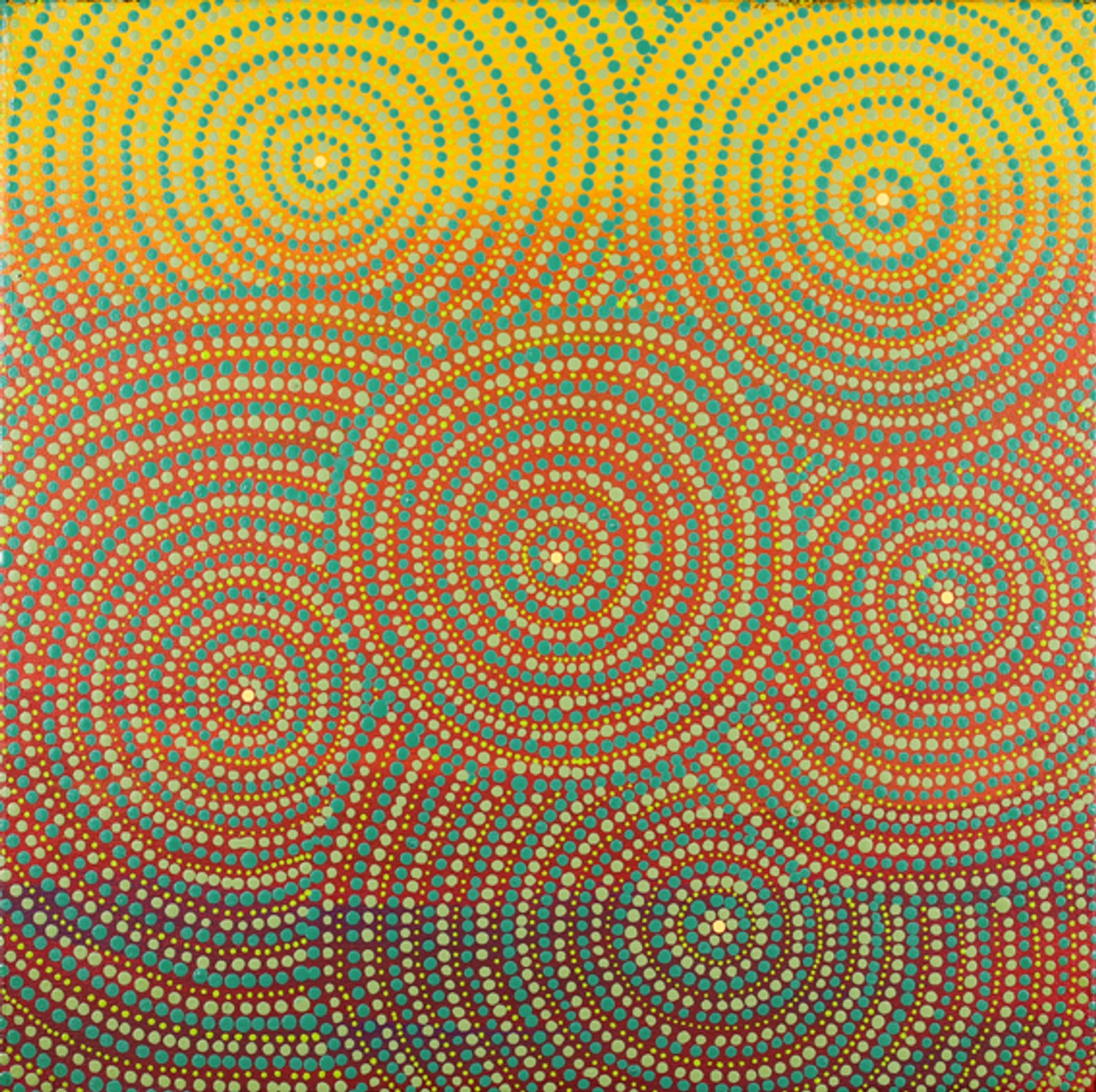Nguru Nyirrpi-wana (Country around Nyirrpi)
This painting depicts the natural landscape around Nyirrpi, a small Warlpiri community (originally an outstation) about 160 km west of Yuendumu. About 200 people live in Nyirrpi today. The bush around Nyirrpi features plenty of ‘watiya’ (trees), ‘marna’ (grass), ‘kuyu’ (animals) to hunt, and ‘miyi’ (edible plants) to gather.
There are a number of beautiful natural features close to Nyirrpi, including sandhills, soakages, and Karrku (Mt. Stanley), a large flat-topped hill that is an important source of red ochre used during ceremonies. There are also a number of small outstations around Nyirrpi. These include Wayililinpa, Yinjirimardi, Karrinyarra (Mt. Wedge), Nginyirripalangu, and many more.
Many sites around Nyirrpi are associated with different ‘Jukurrpa’ (Dreamings). These sites include Karrku, which is associated with a ‘karnta Jukurrpa’ (womens’ Dreaming) and a ‘ngalyipi Jukurrpa’ (snake vine [Tinospora smilacina] Dreaming). In the Jukurrpa, two women of the Napaljarri skin subsection threw a hairstring rope around Karrku and tried to pull it down.
Other Jukurrpa around Nyirrpi include the ‘warna Jukurrpa’ (snake Dreaming) that travels north from Kunajarrayi (Mt. Nicker), the ‘maliki Jukurrpa’ (dog Dreaming) associated with Winijardu, a hill, and the ‘marlu Jukurrpa’ (kangaroo Dreaming) that travels from north to south past Nyirrpi. There is also a ‘pamapardu Jukurrpa’ (termite Dreaming) and ‘mukaki Jukurrpa’ (bush plum [Santalum lanceolatum] Dreaming) associated with Warntungurru, a hill close to Nyirrpi. This ‘pamapardu Jukurrpa’ (termite Dreaming) travels from Wapurtali (Mt. Singleton) in the west to Warntungurru.
The Jukurrpa sites around Nyirrpi are all owned and cared for by different skin subsections. Some people are ‘kirda’ (owners) of the Jukurrpa, and others are ‘kurdungurlu’ (custodians).
In Warlpiri paintings, traditional iconography can be used to represent the landscape around Nyirrpi, the Jukurrpa, and other elements. Paintings of Jukurrpa around Nyirrpi can include wavy lines that are used to represent the ‘ngalyipi’ (snake vine), dashed lines used to represent the ‘pamapardu’ (termites), and concentric circles used to represent waterholes or ‘mingkirri’ (termite mounds).
